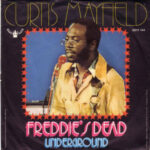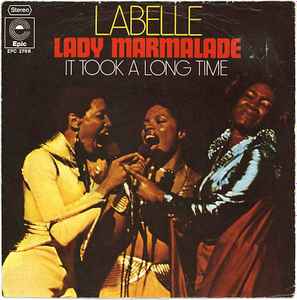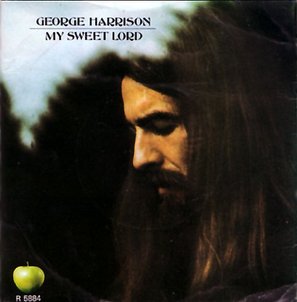 When Curtis Mayfield released “Freddy’s Dead (Theme from A Nightmare on Elm Street)” in 1985, it was more than just a soundtrack single—it was a masterclass in blending social consciousness, funk, and cinematic atmosphere. Serving as the theme for Wes Craven’s horror sequel, the track demonstrated Mayfield’s unique ability to fuse narrative, groove, and social commentary into a single, unforgettable piece of music. “Freddy’s Dead” is simultaneously a funky, danceable track and a haunting musical portrait of urban tension, perfectly complementing the nightmarish world of Elm Street while standing on its own as a piece of musical artistry.
When Curtis Mayfield released “Freddy’s Dead (Theme from A Nightmare on Elm Street)” in 1985, it was more than just a soundtrack single—it was a masterclass in blending social consciousness, funk, and cinematic atmosphere. Serving as the theme for Wes Craven’s horror sequel, the track demonstrated Mayfield’s unique ability to fuse narrative, groove, and social commentary into a single, unforgettable piece of music. “Freddy’s Dead” is simultaneously a funky, danceable track and a haunting musical portrait of urban tension, perfectly complementing the nightmarish world of Elm Street while standing on its own as a piece of musical artistry.
Opening with Funk and Foreboding
From the first notes, “Freddy’s Dead” announces itself with Curtis Mayfield’s signature rhythm and groove. The opening bassline is smooth yet insistent, laying the foundation for a track that is at once catchy and slightly ominous. Mayfield’s guitar riffs, light but precise, interlace with percussive elements to create a syncopated texture that feels alive, vibrant, and a touch sinister—a fitting introduction to a song connected to one of the era’s most iconic horror franchises.
The opening synthesizers add an otherworldly sheen to the composition, hinting at the supernatural themes that define A Nightmare on Elm Street. The arrangement is subtle but purposeful, setting the mood without overpowering the listener, and establishing the track as both a funk anthem and a cinematic statement.
Curtis Mayfield’s Vocal Delivery
Mayfield’s vocal performance on “Freddy’s Dead” is effortless yet commanding. His smooth, falsetto-tinged delivery carries both charm and gravitas, perfectly bridging the worlds of funk, soul, and narrative storytelling. Unlike typical horror themes that rely on shock or abrupt intensity, Mayfield’s vocals provide a measured, almost conversational tone that draws the listener in while maintaining a sense of tension.
The lyrics are delivered with clarity and rhythm, making every word resonate. Mayfield’s vocal inflection adds a subtle storytelling element, as though he is guiding listeners through the eerie landscape of Elm Street while simultaneously engaging them in a danceable groove. There’s a duality here that is quintessentially Mayfield: fun and funky on the surface, yet layered with meaning and awareness beneath.
Lyrics: Horror Meets Social Awareness
“Freddy’s Dead” is notable not only for its connection to horror cinema but also for its socially conscious lyrics. Mayfield was never a musician to shy away from addressing societal issues, and here he weaves a cautionary tale that resonates beyond the fictional setting of Elm Street. The song touches on themes of youth, urban struggle, and the perils of ignoring warning signs, reflecting the kind of socially aware commentary that characterized much of Mayfield’s work.
The references to Freddy Krueger and Elm Street create a cinematic context, but the underlying narrative speaks to a broader human experience. Mayfield frames the story of fear and consequence in a way that is accessible to the listener, using metaphor and urban imagery to connect the horror of the film to real-life anxieties and social dynamics.
Instrumentation: Layers of Groove
One of the hallmarks of “Freddy’s Dead” is its rich, layered instrumentation. The rhythm section is tight and precise, with bass and drums locking into a groove that is irresistible. Percussion accents, rhythmic guitar plucks, and light keyboard flourishes all combine to create a texture that is funky, sophisticated, and dynamic.
The arrangement also emphasizes space and timing, giving each instrument room to breathe while allowing the song’s underlying tension to permeate. The funk elements make the track danceable, but the careful layering of minor key motifs and subtle harmonic shifts keeps the mood slightly ominous, reflecting the horror context without compromising the track’s musicality.
Cinematic Influence and Theme Integration
As a theme song for A Nightmare on Elm Street 3: Freddy’s Dead, the track succeeds in capturing the essence of the film while maintaining its identity as a standalone song. Mayfield’s approach was cinematic without being literal: instead of mimicking jump scares or overt horror tropes, the music conveys suspense, tension, and atmosphere through groove, instrumentation, and melody.
The track’s pacing mirrors the narrative arc of a horror film. The verses unfold like exposition, providing context and setting the mood, while the choruses and instrumental breaks escalate the tension and energy. This subtle musical storytelling demonstrates Mayfield’s mastery of composition, highlighting his ability to integrate narrative structure into popular music.
Production: Smooth, Funky, and Detailed
The production of “Freddy’s Dead” is a testament to Mayfield’s skill both as a musician and as a producer. Every element is meticulously placed within the mix, creating clarity and balance while maintaining the groove’s natural flow. The bass is prominent without dominating, the percussion is crisp, and the guitar and keyboard textures provide melodic and rhythmic interest throughout.
Mayfield’s vocals sit perfectly within this mix, clear and expressive, with reverb and subtle effects enhancing the cinematic quality without drawing attention away from the music itself. The production reflects a mature understanding of space, rhythm, and tone, resulting in a track that is as pleasing to casual listeners as it is to musicians and audiophiles.
Groove and Danceability
While “Freddy’s Dead” carries thematic weight, it is first and foremost a funky, danceable song. The rhythm invites movement, whether in the club, at a party, or while listening at home. The combination of tight percussion, syncopated guitar lines, and Mayfield’s smooth vocal phrasing creates a groove that is infectious yet sophisticated, a hallmark of his style.
This balance of entertainment and substance is key to the song’s enduring appeal. It can function as a soundtrack to cinematic horror, a funk anthem on the dance floor, or a reflective listen, all without losing cohesion.
Cultural Context and Reception
Upon its release, “Freddy’s Dead” became a hit, reaching the top of R&B charts and solidifying Mayfield’s reputation as a versatile, socially conscious artist. Its connection to a major horror franchise expanded its reach, introducing Mayfield’s signature style to a wider audience while still retaining credibility in the funk and soul communities.
The track also reflects the mid-1980s musical landscape, where funk, R&B, and cinematic pop often intersected. Mayfield’s contribution to the horror soundtrack genre was both innovative and influential, demonstrating how music could enhance narrative and emotional impact without resorting to gimmickry.
Legacy and Influence
“Freddy’s Dead” has endured as a standout example of genre fusion, combining funk, soul, cinematic narrative, and social awareness in a single track. Its influence can be seen in later soundtrack work, where artists began to blend pop sensibilities with thematic storytelling to enhance the cinematic experience.
The track remains a testament to Mayfield’s artistry and vision. It demonstrates that popular music can carry narrative weight, social commentary, and stylistic innovation while remaining catchy and enjoyable. Its grooves, melodies, and production values continue to inspire musicians, producers, and listeners alike.
Live Performance Energy
In live settings, “Freddy’s Dead” takes on an added vitality. Mayfield’s charismatic presence, coupled with the band’s tight instrumentation, transforms the track into a kinetic, engaging performance. The audience is drawn in by the groove, the storytelling, and the energy of the ensemble, creating an immersive experience that mirrors the cinematic intensity of the studio version.
Live renditions often highlight extended instrumental breaks, giving space for solos, improvisation, and audience interaction. These moments reinforce the song’s versatility and its capacity to be both a danceable anthem and a narrative-driven musical experience.
Why “Freddy’s Dead” Endures
The enduring appeal of “Freddy’s Dead” lies in its seamless combination of funk, narrative, and social awareness. Curtis Mayfield’s ability to blend entertainment and substance, groove and message, ensures that the track remains relevant decades after its release.
Listeners are drawn to its infectious rhythm, memorable melodies, and evocative vocals, but it is the underlying artistry—the cinematic sensibility, thematic depth, and production finesse—that gives the song longevity. “Freddy’s Dead” is not merely a soundtrack; it is a fully realized work of art, capable of standing alongside Mayfield’s broader catalog while simultaneously enhancing the horror narrative it was created to support.
Conclusion: The Funk That Haunts
“Freddy’s Dead (Theme from A Nightmare on Elm Street)” is a remarkable fusion of funk, cinematic storytelling, and social commentary. Curtis Mayfield’s masterful vocals, layered instrumentation, and thoughtful production combine to create a song that is both haunting and irresistible. Its ability to function as a horror theme, a dance track, and a socially aware anthem speaks to Mayfield’s genius as an artist.
Decades after its release, “Freddy’s Dead” continues to captivate audiences with its infectious groove, melodic sophistication, and emotional resonance. It demonstrates that popular music can be bold, innovative, and deeply expressive—a track that haunts, entertains, and inspires all at once.


